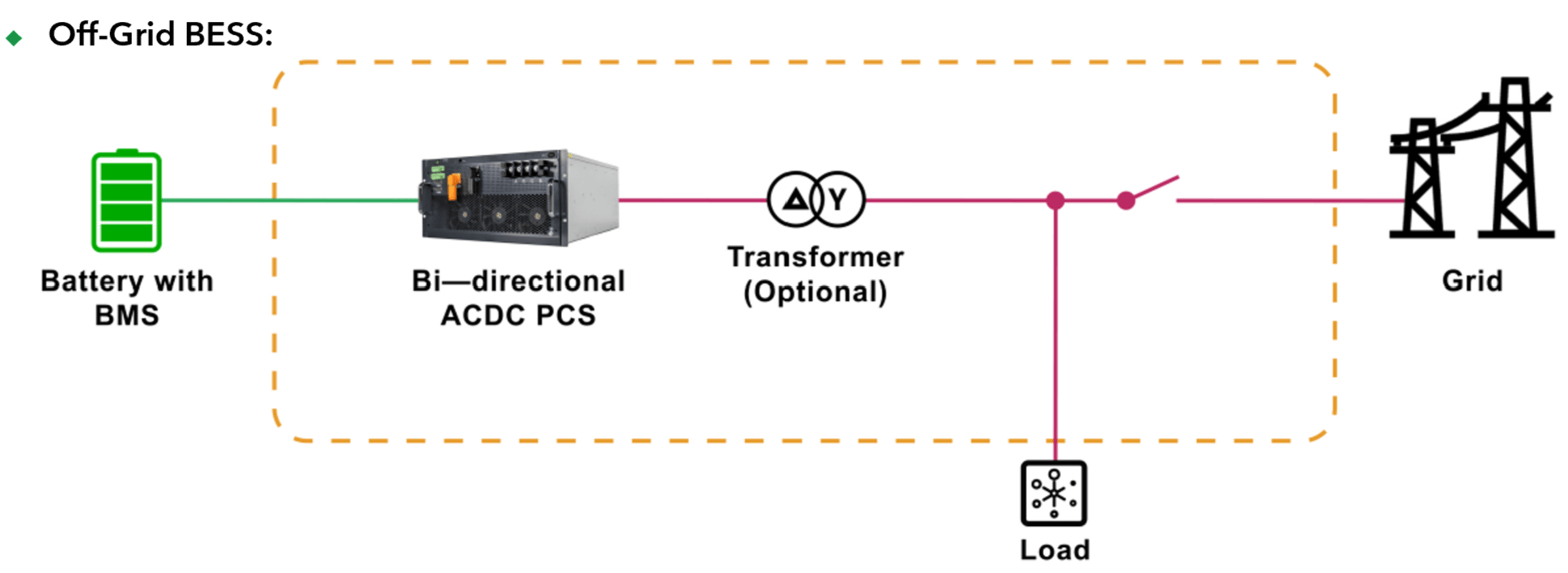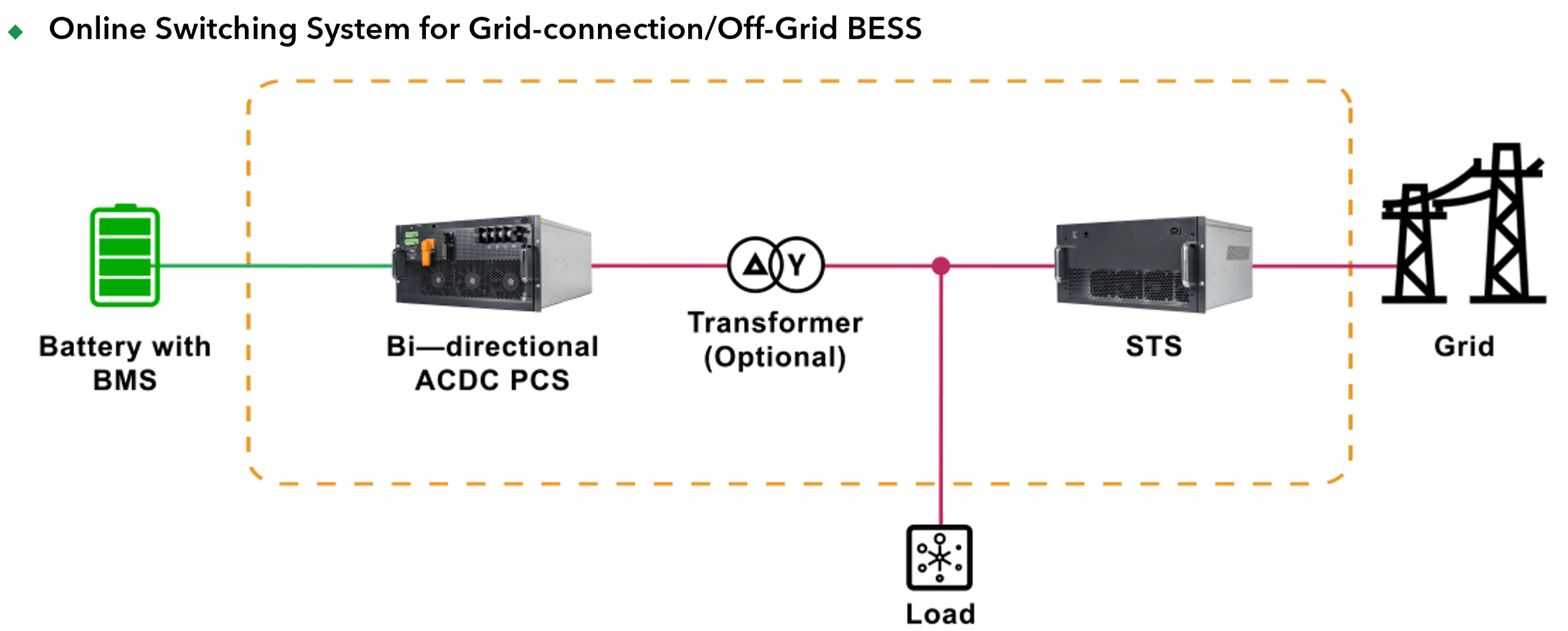Off-grid energy storage systems have become essential for providing continuous power in areas without grid coverage or during power outages. Enjoypowers guide details how to design an off-grid energy storage system for industrial and commercial use, emphasizing its independence and flexibility.
Table of Contents
Difference Between Off-Grid and Grid-Connected Systems
System Functions
- Off-Grid Energy Storage Systems: Operate independently of the public grid, relying on local energy sources and storage systems to meet all power needs. Suitable for remote or non-grid areas.
- Grid-Connected Energy Storage Systems: Connected to the public grid, capable of receiving or delivering power, primarily used to enhance the flexibility and efficiency of the grid.
PCS Selection
- Off-Grid Mode: PCS operates in VF mode to provide voltage and frequency for loads. The AC side of the storage system must provide 3P4W power to meet single-phase load demands. If PCS cannot directly provide 4W, a Delta/Wye transformer is needed.
- Grid Mode: PCS operates in PQ mode, following grid voltage and frequency.
Choosing the right PCS is crucial for ensuring system efficiency and stability, especially when dealing with unstable load demands.
Operational Modes of Off-Grid Energy Storage Systems
Manual Off-Grid System:

Suitable for situations where power outages are infrequent, requiring manual switching from grid-connected to off-grid mode.
Automatic Grid-Off-Grid Switching Mode:

Common Implementation Issues
STS Power:
STS power should be twice the power of the PCS to handle scenarios supplying power and charging simultaneously. For example, if the PCS is 105kW, a 200kW STS is typically configured; if two 105kW PCS modules are used in tandem, a 500kW STS is configured.
Load Electrical Characteristics:
Consider the impact current of motor-type loads and the inductive or capacitive loads to ensure the PCS provides appropriate energy.
Key Considerations
Manual Off-Grid System: When switching from off-grid to grid-connected mode, ensure the PCS has entered PQ mode.
Conclusion
This guide provides a comprehensive overview for designing off-grid industrial and commercial energy storage systems, including critical component selection, operational modes, common issues, and important considerations, aiming to help readers establish efficient, reliable, and cost-effective off-grid energy storage solutions.

